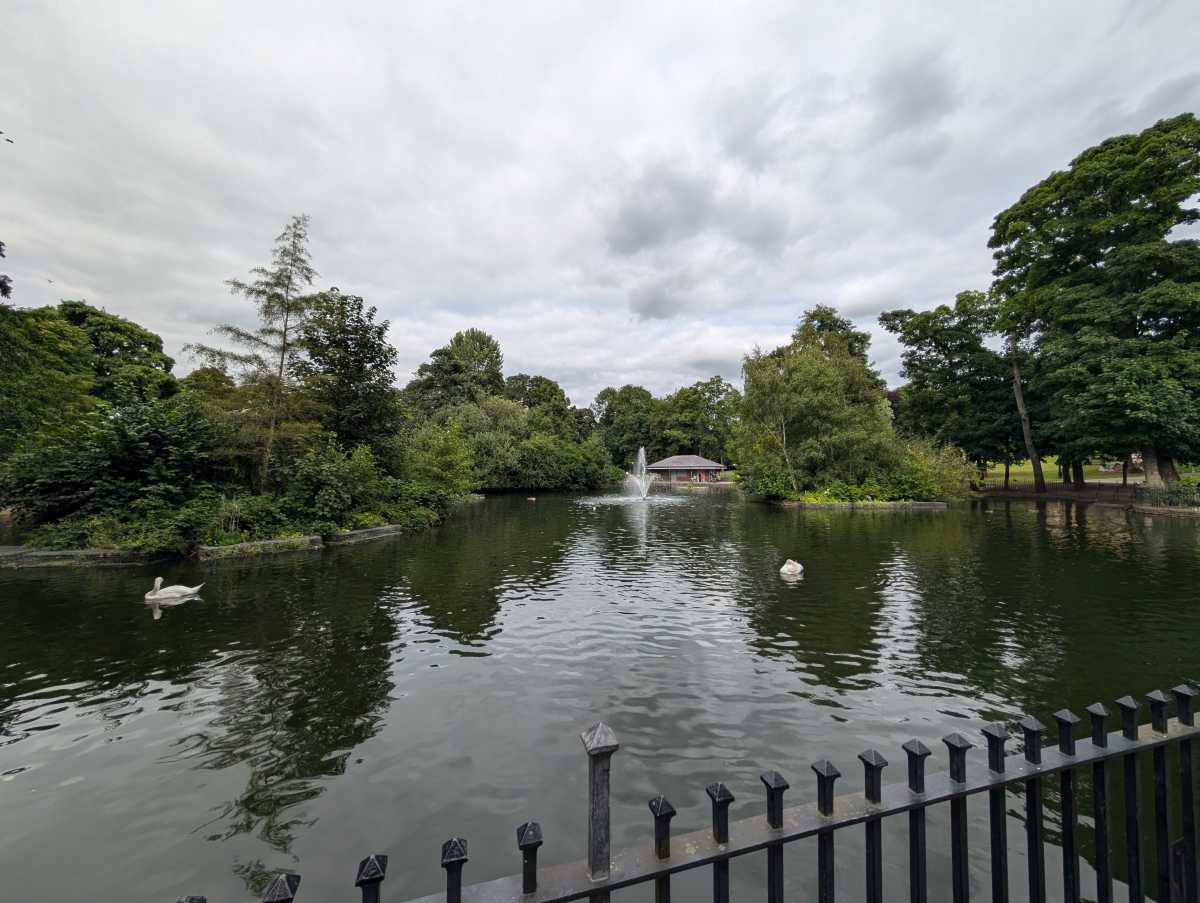I haven’t used it enough to do a comprehensive review yet, owing to a slew of new software features, including Gemini, but I have a lot of comments on the design, hardware, and more. Let’s have a look at Google Pixel 9.
Design
I’ve been a fan of Pixel phone designs since the beginning, but this year I’m split.
Google has always made Pixel handsets stand out, from the two-tone backs of earlier generations to the polarizing camera bar introduced with the Pixel 6.
I’ve always enjoyed Google’s style of pebble-like forms and mainly beautiful hues, but the Pixel 9 series has taken a new route.
The build quality is clearly greater than before, but Google’s design this year is, to put it simply, iPhone-inspired.
![]()
The flat sides and rounded corners are straight out of Apple’s design book, and aside from minute elements like button placement and the glossy rear cover, the camera bump would be the most obvious difference between the Pixel 9 and iPhone 15.
It’s not that Google has done anything particularly wrong here – I enjoy the iPhone 15 – but it’s a shame to lose the majority of the Pixel identity in favor of conforming to trends. I prefer the older camera bar design that merged into the sides, and the glossy back is one of the most slippery I’ve ever handled (the Pros have a matte back but glossy metal sides).
![]()
A case is almost always required, and it’s a pity to hide the majority of the phone. Especially since I really enjoy the Wintergreen colorway I’ve been testing; Obsidian, Porcelain, and Peony are also options.
Hardware
You might argue that Google’s Pixel phones have always been a little behind in terms of hardware, but not much.
However, the Pixel 9 boasts a lot of enhancements that elevate it to the level of a premium phone.
Of course, you get the newest Tensor G4 processor, which in my tests has run the phone flawlessly. There’s also a significant 50% increase in memory, with 12GB now normal (Pro models receive 16GB).
![]()
The updated Actua display is noticeably brighter than before, making it simpler to use outside. A narrower bezel helps the Pixel 9 appear more luxurious.
It still lacks LPTO technology, which would reduce the refresh rate to 1Hz, but the larger 4700mAh cell provides decent battery life, so I won’t complain too much. It’s technology that’s naturally reserved for Pro models.
Happily, Google has finally switched from an optical fingerprint scanner to an ultrasonic one, and the performance is significantly improved. Facial recognition works nicely, too.
![]()
On the camera front, the primary update is a rise from 12- to 48-megapixel ultrawide cameras. I’m still testing the cameras, but so far the results have been as good as we’ve come to expect from Pixel phones.
Of course, you’ll still need to buy a Pro to obtain a telescopic lens and a higher-resolution selfie camera.
Here are some of the samples I’ve tested thus far.



Software
It may come as a surprise that the Pixel 9 series runs Android 14. This is due to Google launching the series earlier than normal in the year, and Android 15 is still in development. However, you’ll be the first to receive 15 when it does arrive, and Google still provides seven years of OS and security upgrades, so I don’t think that’s a big deal.
Regardless, there is still a lot of fresh content here, which is why I am not yet ready to provide a comprehensive assessment. Google Gemini is the big one, and with AI driving the tech industry right now, there’s a lot to break down and experiment with.
![]()
I don’t think Google has done a enough job of articulating what Gemini is and its specifics, such as if it is a direct replacement for Google Assistant (it is on Pixel 9 phones).
As with many AI tools, it’s difficult to determine exactly what it can and cannot achieve.
When I first opened Gemini, it informed me it could make photos, but when I requested one, it indicated it couldn’t. The Pixel Studio app, which is dedicated to this duty, is also not installed on the phone, despite the setup procedure mentioning it by name.
Gemini should also be able to assist with specific requests, such as adjusting phone settings. While it can toggle Bluetooth on and off, it cannot adjust the duration of my screen timeout.
![]()
The new weather app has also caused some confusion, which is unusual for Google. I like it so far, however there are two: the one integrated into the homescreen beneath the date links to the previous version, and the phone even prompted me to make an app icon for it.
We don’t like seeing devices launch with the promise of future improvements, but Google would have been better off ironing out these bugs and releasing them with Android 15 later this year.
What I do have is the Pixel Screenshots software, which I believe I will find quite useful. I capture a lot of screenshots – restaurant menus, maps, and so on – and the software not only filters them into their own app but also allows you to search for information in the same way that you can search for ‘burgers’ in Google Photos. It is likely to be a huge time saver for information that you know is somewhere but can’t discover manually.
![]()
I also have new capabilities in the camera app, such as ‘Add Me’, which allows the photographer to be in the shot by combining two photos using AI. In the final review, I’ll discuss my experience with this and other camera functions.
Price
The only item to highlight for now is that the price has increased once more. The Pixel series has gradually increased in price over the last few years, with the cheapest model being priced at £799/$799.
Early verdict
The TL:DR version is that I’m more conflicted (and perplexed) about the Pixel 9 than I normally am about Google’s phones.
The look is too iPhone-like, losing identity, and while there are some nice hardware advancements and new software functions, I’m not convinced they’re enough to warrant another price increase.
Check back shortly for my complete review.

